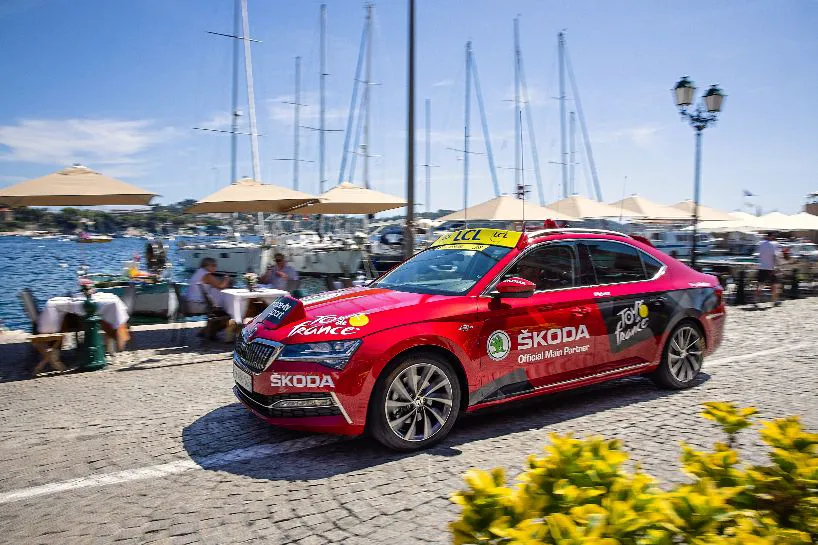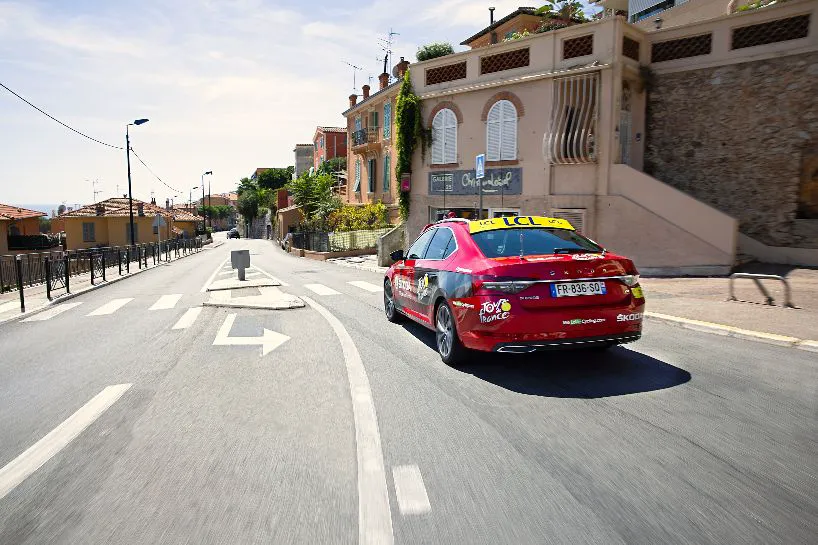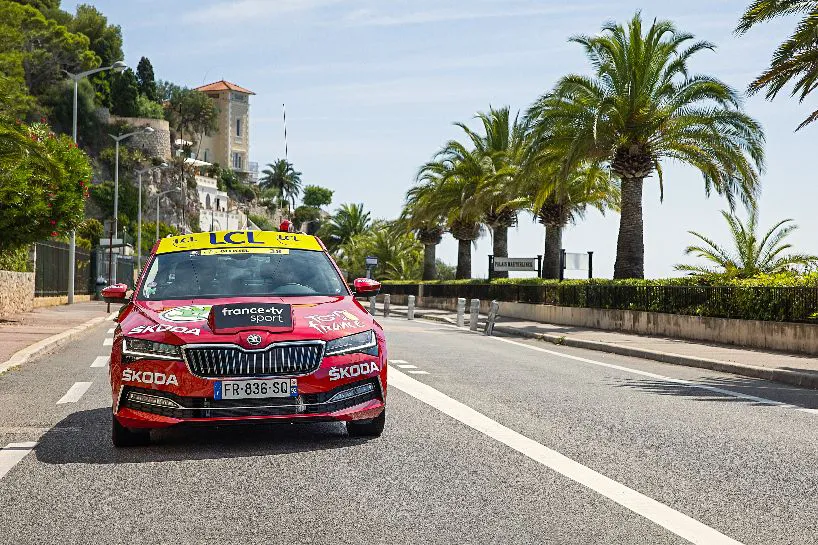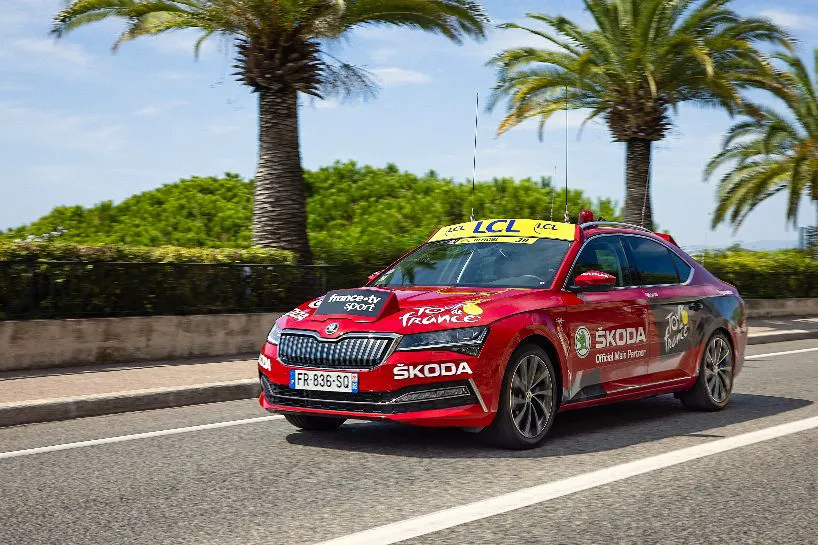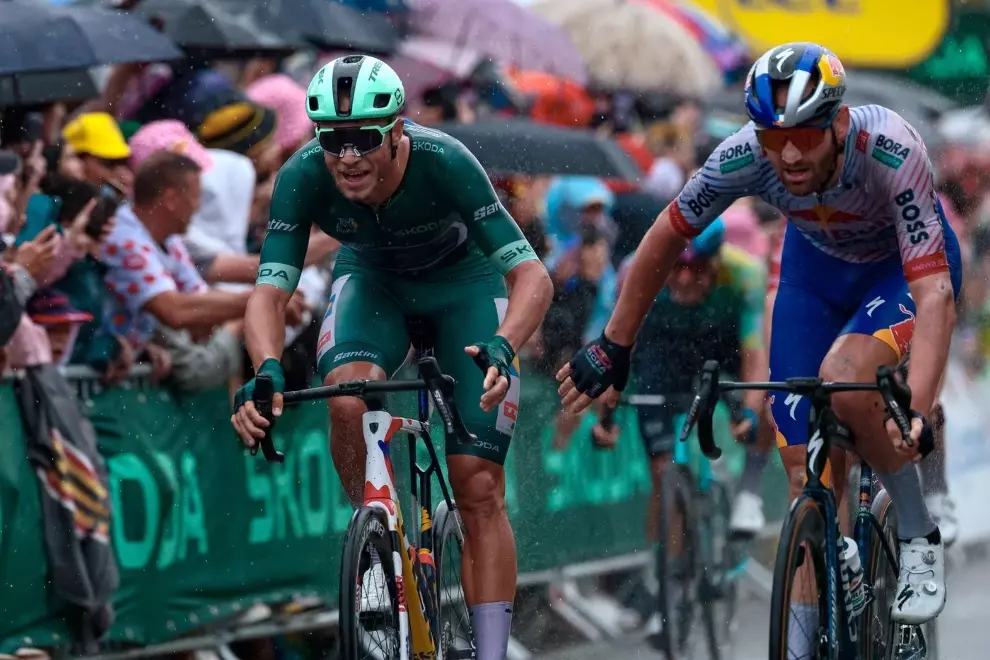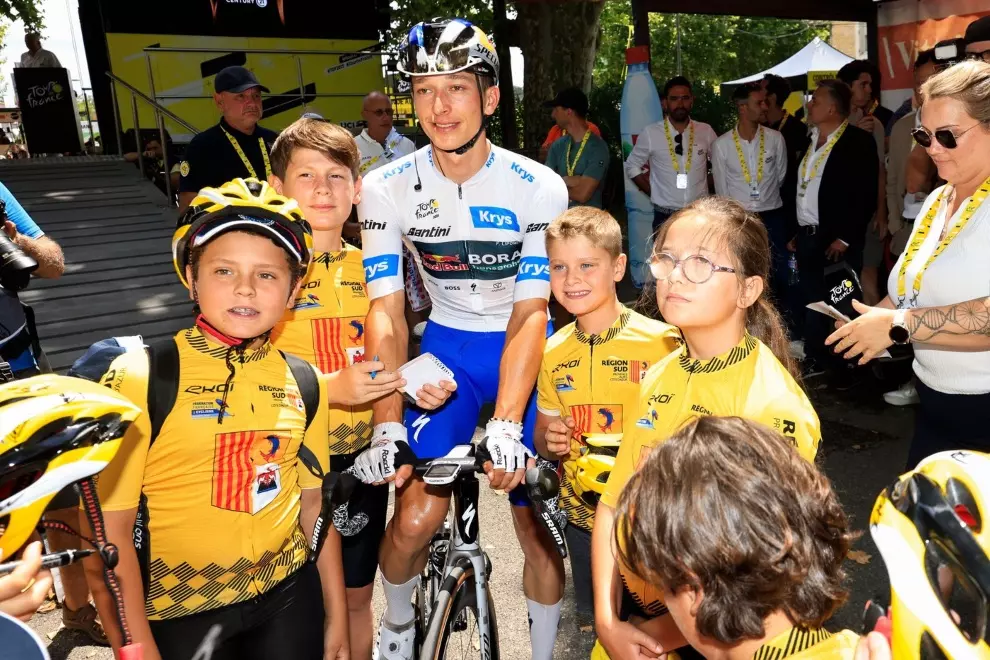I didn’t care whose fault it was. Realising quickly the deep trouble I was in, streams of sweat ran down my forehead, neck and back. The car that had just intersected with a bus’s trajectory should have been ready for the Tour de France ceremony planned for early the next day. According to what had happened just seconds ago, the attendance of the car at the event was now unlikely.
I regretted joking about how weird it would be if I crashed the precious car at dinner the night before. I should not have even mentioned it. A horrible nightmare resurfaced as I sat in the damaged vehicle. How could this have ever happened to me?

As a journalist, I had received a hard-to-reject offer a week before: I would be allowed to enjoy a wonderful day-long driving experience with the Škoda SUPERB iV, a model that serves as personal car to the Tour de France and A.S.O. director Christian Prudhomme and the race marshals during the Tour.
The Škoda SUPERB iV is a red limousine with a hybrid engine and tailor-made equipment such as a sunroof, beacons, horns, radios, antennas and the famous refrigerator where champagne for the VIP guests is cooled. Everything is done to make the car a mobile race headquarters for the highest officials of the Tour.
The idea was that I would drive the car all over Nice while professional photographer Jakub Frey would take a few snaps with me and the limousine for We Love Cycling. We were on a tight schedule – just a day before the start of the grand race.
Anyone who has ever driven through the city of Nice will agree that its traffic is more akin to cities like Rome, Cairo or Baghdad than Berlin or Copenhagen. It’s busy and incredibly annoying.

Now, multiply that madness by 10 to imagine what happens when all the Tour team trucks and cycling fans flock to the city from around the world.
Franck Meneghini, who is in charge of the A.S.O. car and motorcycle fleet, met me in the organisation’s headquarters in person just to make sure he had entrusted the car into the right hands. Meanwhile, the traffic in the city went crazy.
Leaving the underground parking garage in the Škoda SUPERB iV, I got in touch with Jakub, the photographer, who was riding a scooter. Using walkie-talkies, we agreed to meet by the Museum of Modern and Contemporary Art at the Promenade des Arts to reschedule our photo plans because we apparently had little to no chance to catch up with the storyboard we had drawn the day before.
As soon as I reached the meeting point and tried to pull over to the curb, the yellow bus brushed against the right-hand side of the car. As I watched the right rear-view mirror fall, I heard a terrible screeching noise.
Horrified, I swore badly in my native language and pulled over after several metres to check the damage. As the bus stopped just behind my car, the driver stepped out. Dozens of passengers’ faces were pressed against the bus windows, curiously observing the scene. Some spectators gathered around and took selfies. Time to smile! Even though I didn’t understand a word they were saying, one of them explained to me in English that it was not my fault.

The bus driver still had to deal with the fact that she had a bus full of people, so she quickly passed me an official form to fill out, and after we both had signed, she left me standing on the sidewalk.
It wasn’t that bad, actually. The front fender was slightly creased and scratched, as was the body by the right wheel. Luckily, I managed to fix the broken rear-view mirror so it looked almost new. I could drive away, but the car’s state was far from perfect.
I called A.S.O. to check the options. Fortunately, a mobile service team has just arrived in Nice to take care of all the cars belonging to the event’s official convoy. I was given the number of the service boss, Radovan Beran.
“Don’t worry, man, we’ll work it out,” Mr. Beran soothed me on the phone. Hopefully, there was still a chance for my salvation.
Since the director’s red car is an absolute priority, all the spare parts, including bumpers, fenders and doors, are carried in service trucks and painted red in advance to save time if a replacement is needed. All the servicemen have to do is to replace the damaged parts. In a normal car shop, the repairs take up to three days. At the Tour, it is a matter of hours.
For other cars of the Tour, the mobile service team uses quick-drying paints. “Sometimes, we just spray the fenders on the street,” Mr. Beran said. As a chief of the Kosmonosy Service Center department of the Škoda AUTO company, he is personally responsible for the cars sent to the Tour de France and the Spanish Vuelta.
Is it the Tour or La Vuelta where cars are more likely to get damaged? “The Tour is traditionally more hazardous, with more cars on the roads and also heavier traffic,” Mr. Beran explained. The official Tour convoy consists of approximately 250 cars every year. On top of that, the service team is also responsible for the accompanying Volkswagen Cars. “And if one of the cycling team members shows up with a broken rear-view mirror, like you, I can’t let them go without help.”
Mr. Beran keeps statistics from every year. His books show 250 service interventions from last season. In 70 cases, there were minor repairs such as flat tyres or cracked windscreens. The rest were damaged or crushed metal parts. The most frequently impacted components are the front bumpers, rear-view mirrors, windscreens and bonnets. After years of experience, servicemen can estimate the number of required parts and can do most of the service work using their own stock. They carry everything they need from the Czech Republic in two large trucks. In case of an emergency, colleagues from the Škoda Auto Parts Centre in Mladá Boleslav are ready to send the missing parts immediately by an express courier.

Even though local services are arranged to assist in cases of more complex repairs alongside the entire Tour de France official route, Mr. Beran prefers to use them as little as possible. They’re either too far from the finish line or the traffic is too busy to get there in time, so he prefers to do it himself right where he is.
The service team consists of eleven people. There are five mechanics, two metal workers, one painter, two drivers and Mr. Beran, the boss. What skills are expected of the individual members? One of the mechanics is an electric-car specialist able to service the Škoda ENYAQ iV. Metal workers must be able to straighten sheets without damaging the paint using a method called ‘the body system’. The biggest problems the drivers face can occur in the mountains with narrow roads. “I often use the experience and contacts I gained during my career with the Tour,” Mr. Beran said.
Each day, the team must be at the finish line no later than two o’clock in the afternoon, but they always try to get there by noon just before the traffic gets completely congested. After their job is over around 9 at night, they still need to drive some 100 to 250 km to get to the next hotel. “It’s a nomadic life but after 18 years on the Tour, I’m slowly getting used to it,” Mr. Beran laughed.
Before our interview was finished, the red Škoda SUPERB iV was done. “Would you like to drive?” Mr. Beran asked. I thanked him for the help from the bottom of my heart, but I chose the scooter instead. I can say without much exaggeration that the Czech servicemen saved the Tour. I owe you one, guys!

